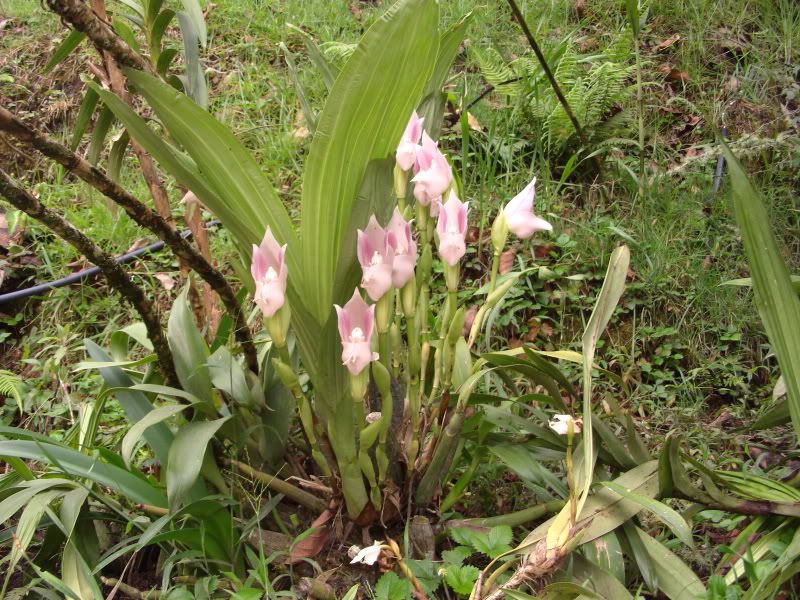Anguloa, commonly known as tulip orchids, is a small orchid genus closely related to Lycaste. Its abbreviation in horticulture is Ang. This genus was described by José Antonio Pavón and Hipólito Ruiz López in 1798. They named it in honor of Francisco de Angulo, a contemporary Peruvian who collected orchids as a hobby and by this way had become quite knowledgeable about these plants, assisting the botanists in their work.
This genus is found on the forest floor at high elevations from Venezuela, Colombia, Ecuador to Peru.[1]
The flowers of these orchids have a strong scent of cinnamon. They are of waxy appearance and are (in wild species) either of two colors, depending on the species – greenish white, or yellow to red. A single flower per inflorescence arises from the base of each new pseudobulb. The white tulip orchids have six inflorescences per pseudobulb, the other can produce up to twelve inflorescences. The sepals have a bulbous shape, resembling a tulip; hence the common name. The lip is three-lobed. The column has four pollinia.
This genus is found on the forest floor at high elevations from Venezuela, Colombia, Ecuador to Peru.[1]
Description
Tulip orchids are rather large terrestrial and sometimes epiphytic plants with fleshy pseudobulbs longer than 20 cm. The long, lanceolate and plicate leaves of a full-grown Anguloa can be more than 1 m long. Two to four leaves grow from the base of each pseudobulb. The leaves are deciduous, and are shed at the start of each new growth.The flowers of these orchids have a strong scent of cinnamon. They are of waxy appearance and are (in wild species) either of two colors, depending on the species – greenish white, or yellow to red. A single flower per inflorescence arises from the base of each new pseudobulb. The white tulip orchids have six inflorescences per pseudobulb, the other can produce up to twelve inflorescences. The sepals have a bulbous shape, resembling a tulip; hence the common name. The lip is three-lobed. The column has four pollinia.
Species
There are nine species of tulip orchids, with varieties known of some of these. In addition, there are 4 natural hybrids, which might eventually evolve into distinct species with self-sustaining populations. Other hybrid tulip orchids are bred by horticulturalists, but do not occur in the wild.[1]- Anguloa × acostae (Colombia)
- Anguloa brevilabris
- Anguloa cliftonii

- Anguloa cliftonii var. alba
- Anguloa cliftonii var. concolor
- Anguloa clowesii

- Anguloa clowesii var. flava
- Anguloa dubia
- Anguloa eburnea
- Anguloa hohenlohii
- Anguloa hohenlohii var. hohenlohii
- Anguloa × rolfei (unplaced name) (Colombia)
- Anguloa × ruckeri (A. clowesii × A. hohenlohii) (Venezuela)

- Anguloa × speciosa (Venezuela and probably Colombia)
- Anguloa tognettiae
- Anguloa uniflora
- Anguloa virginalis

- Anguloa virginalis var. turneri

Nhận xét
Đăng nhận xét